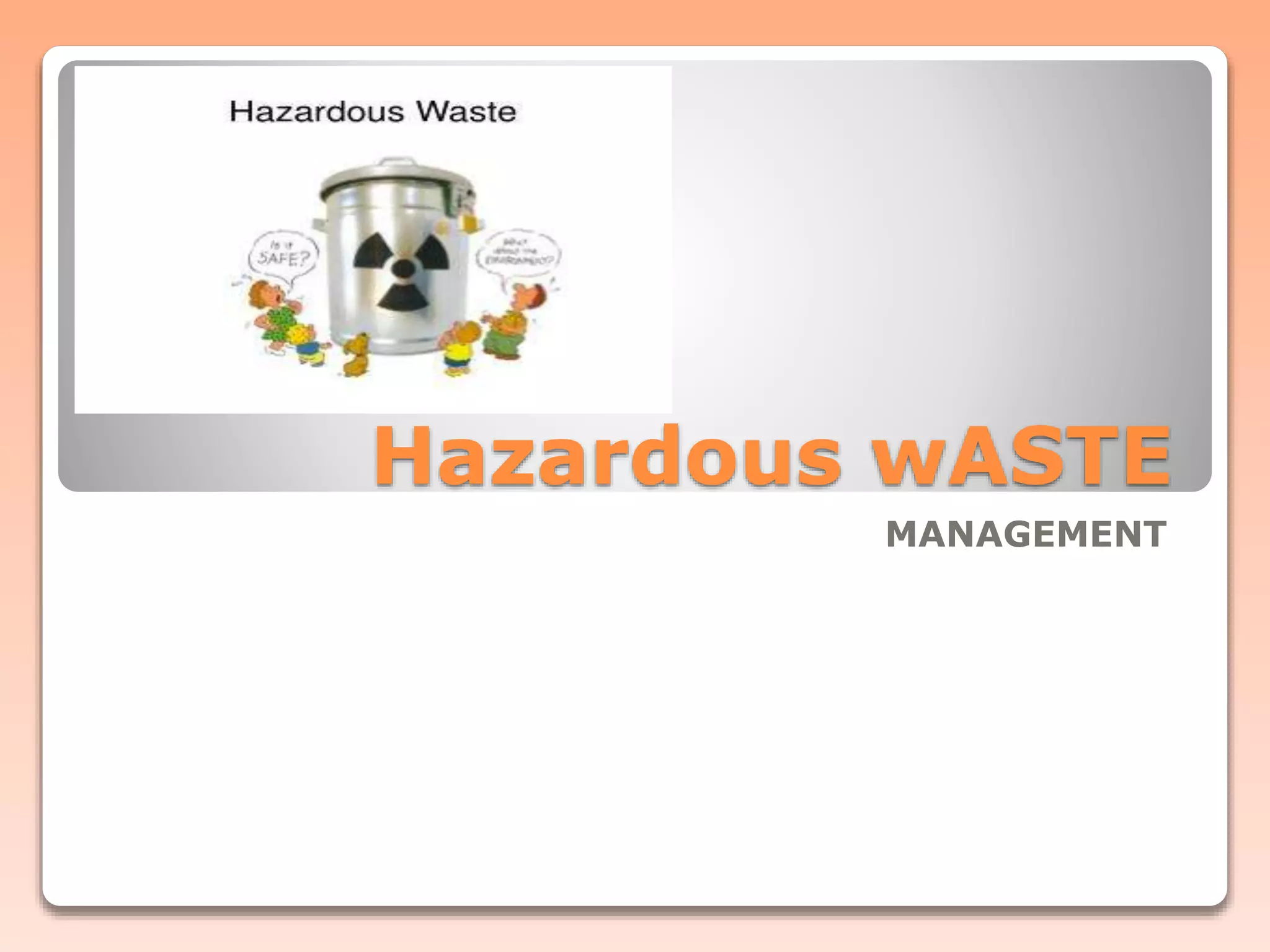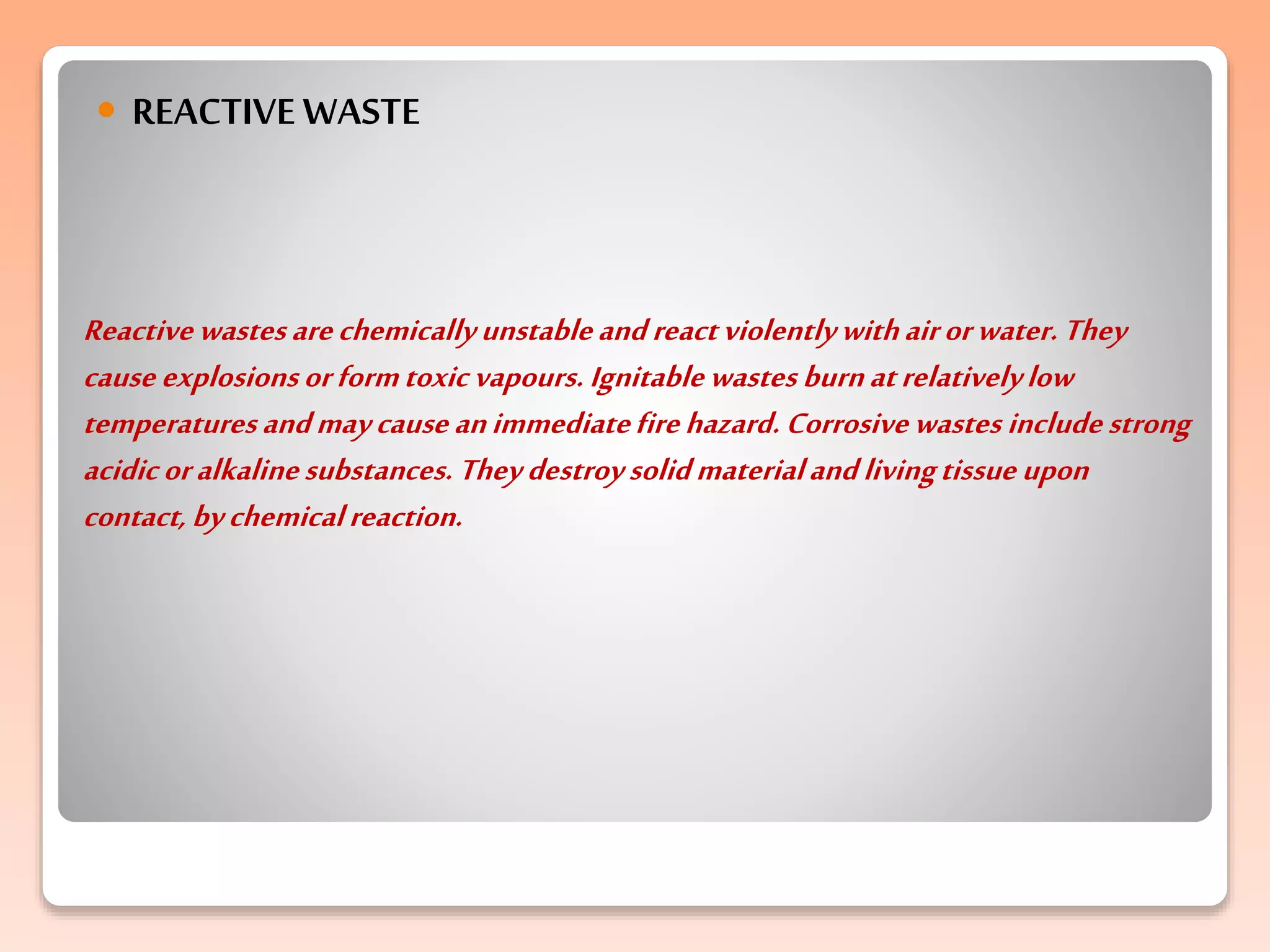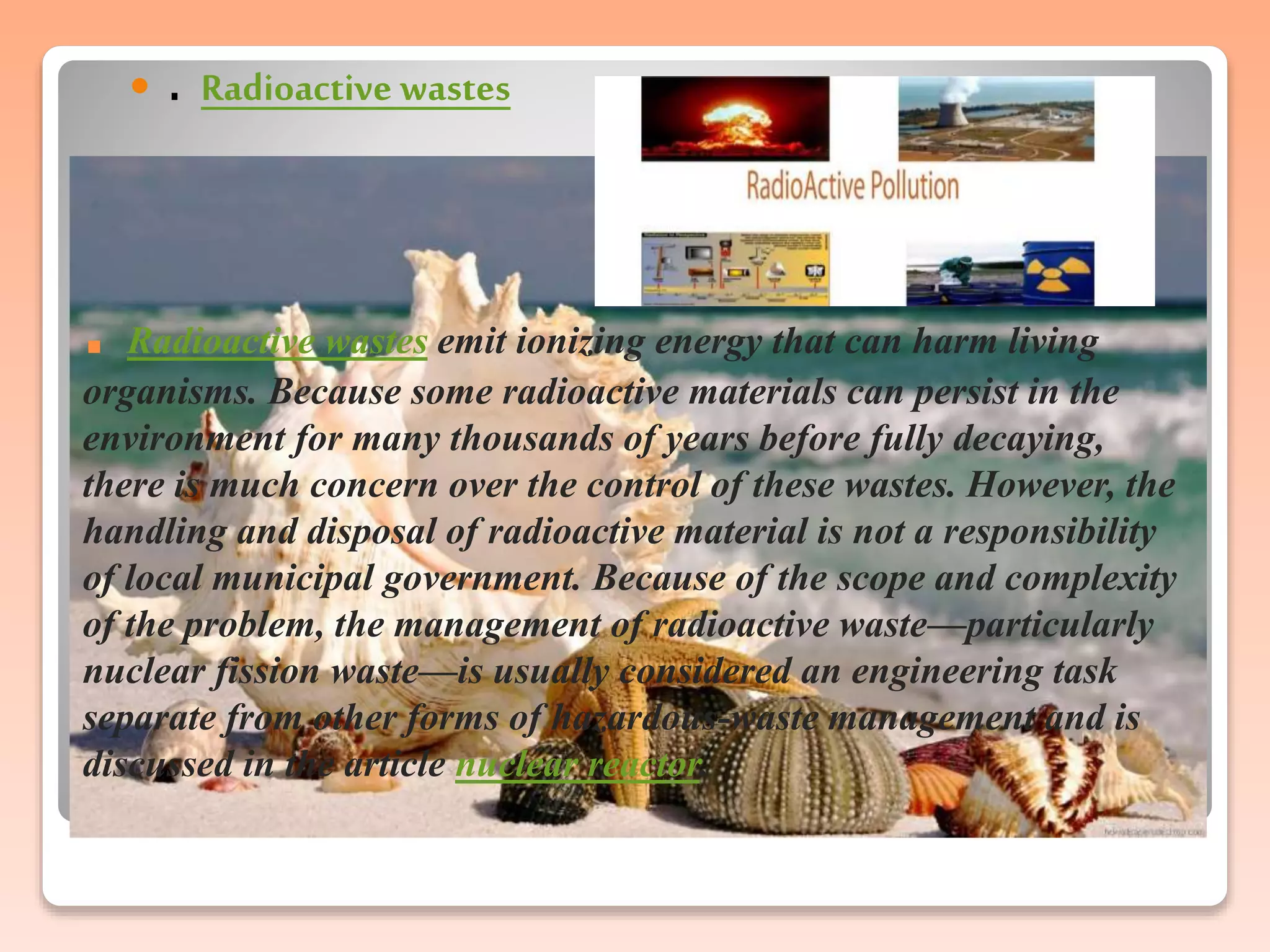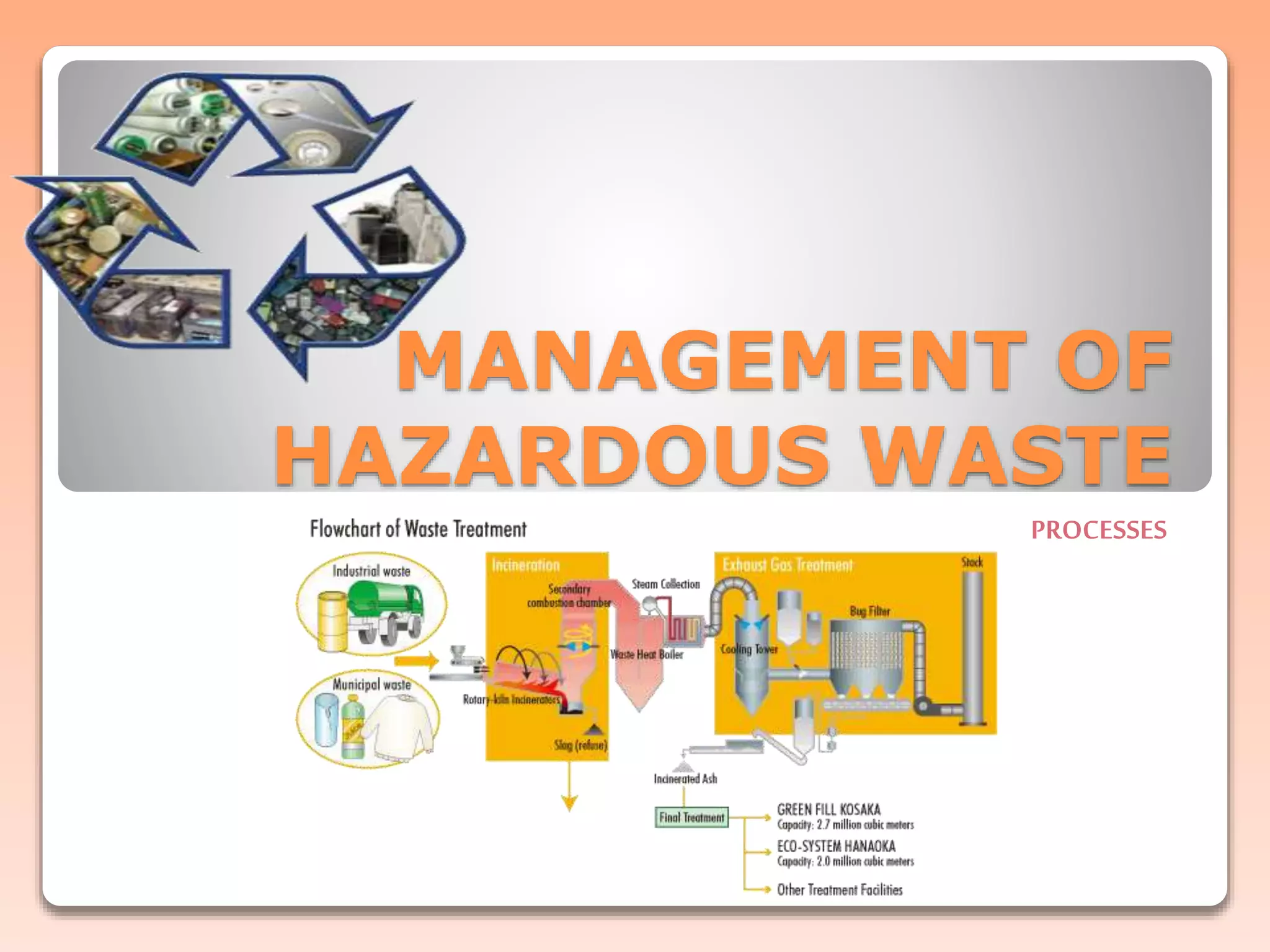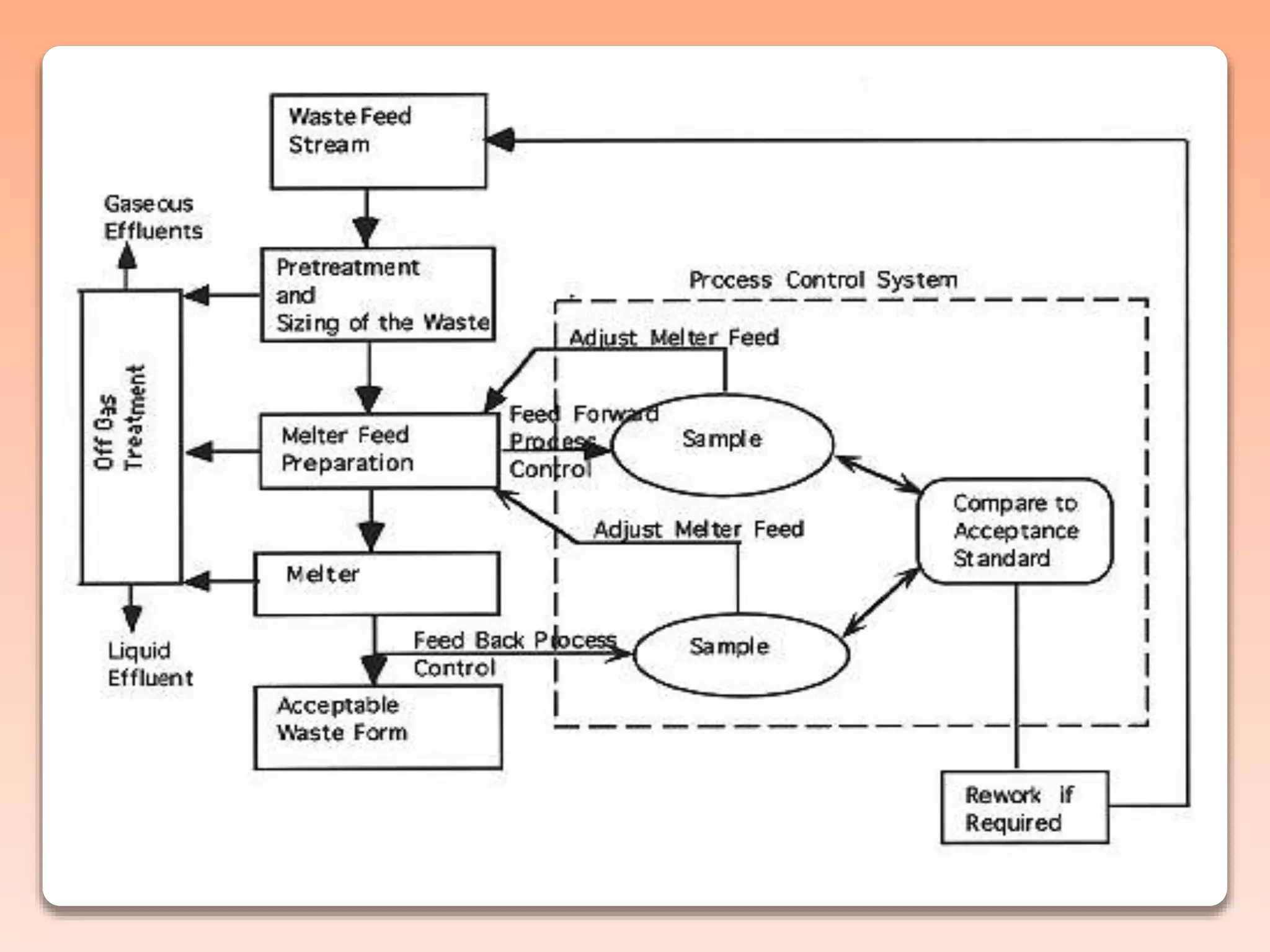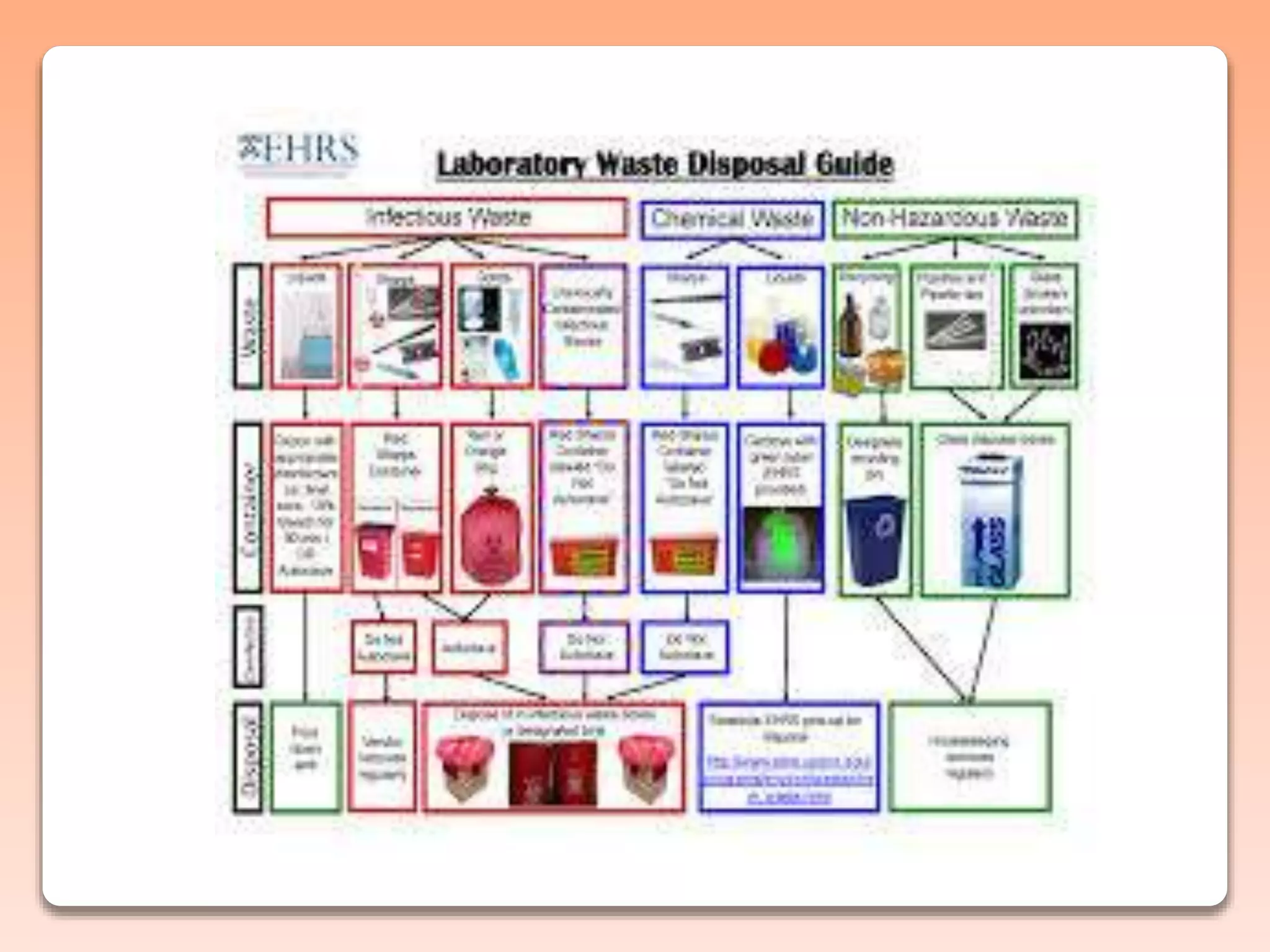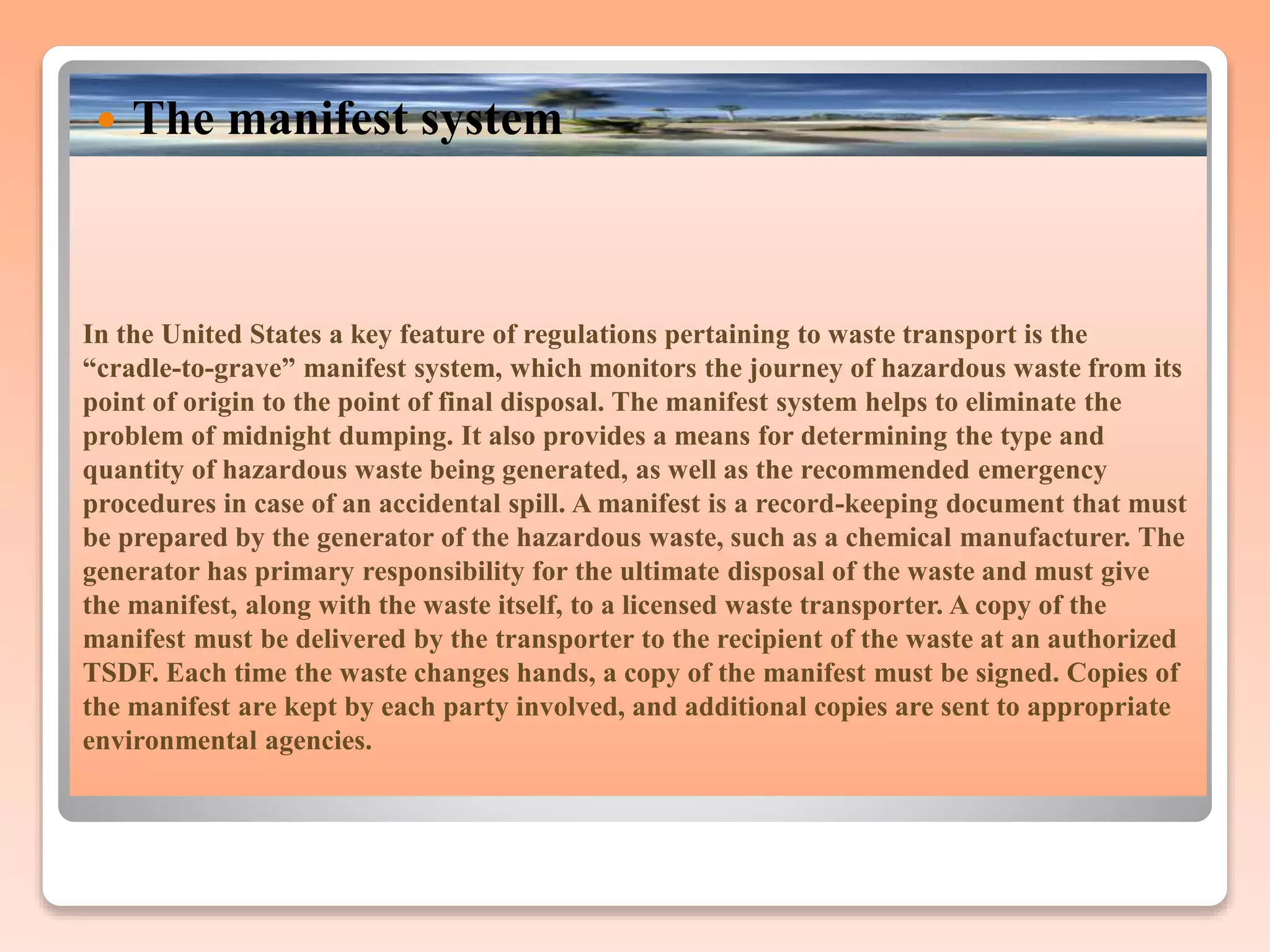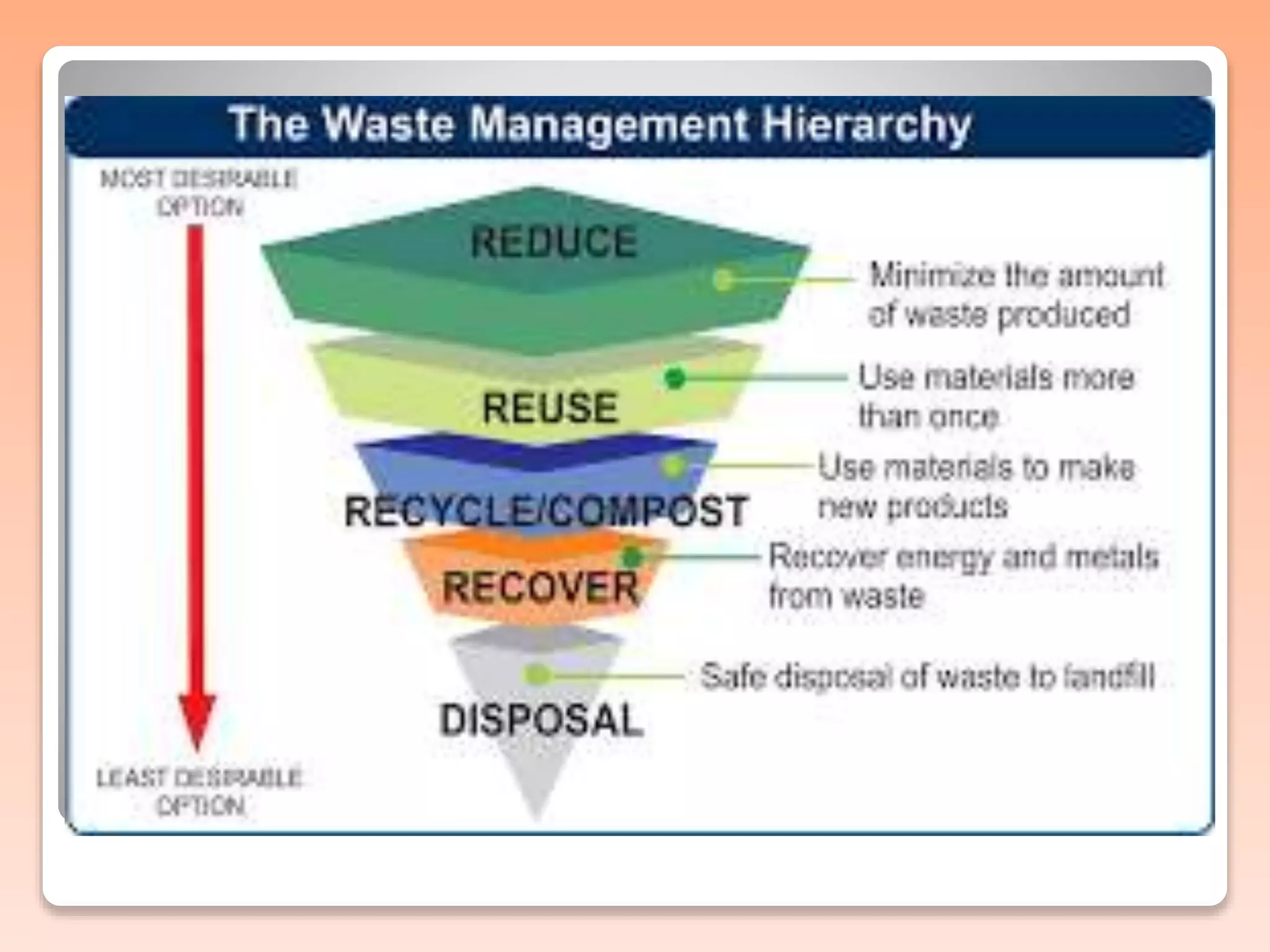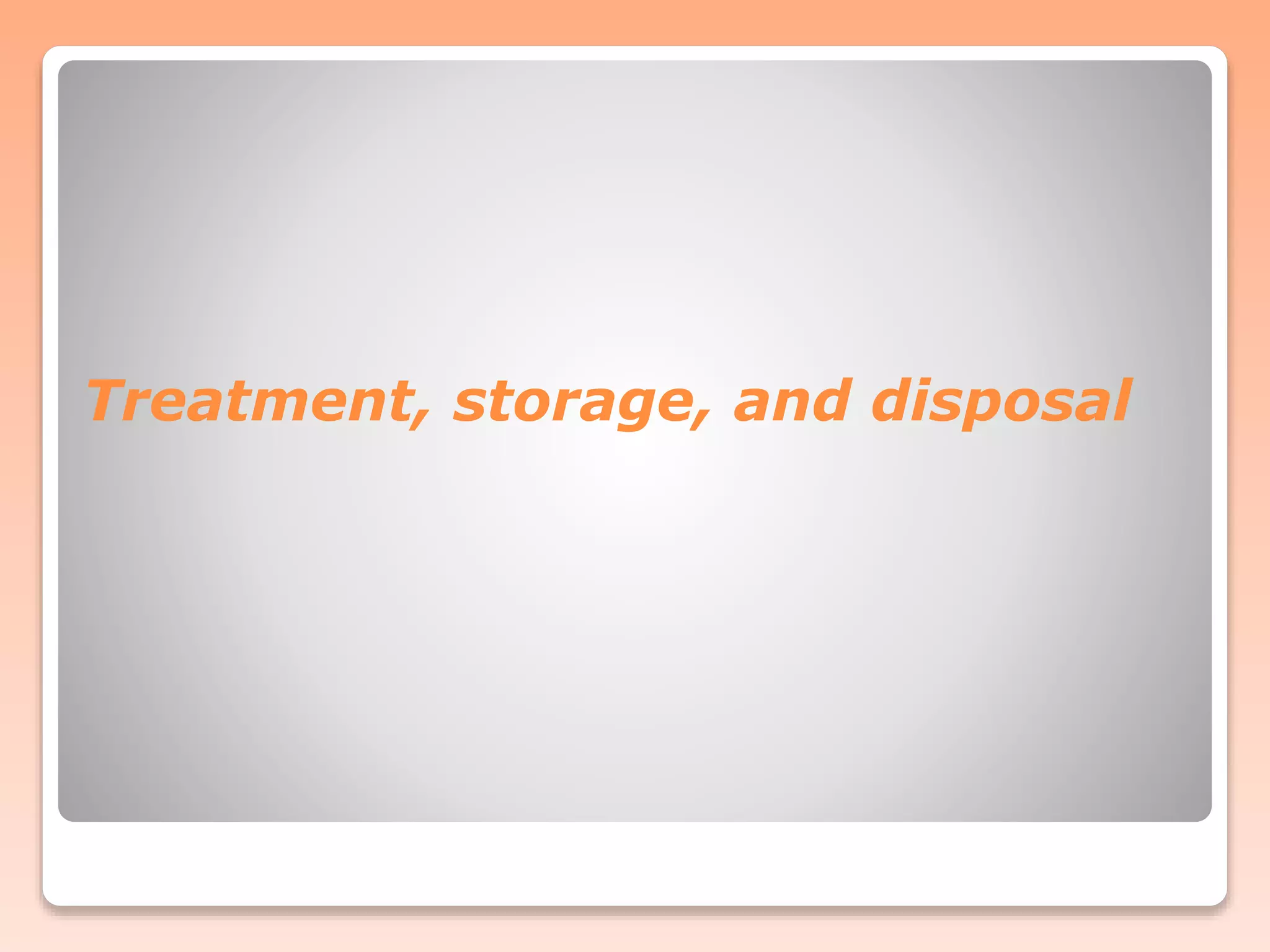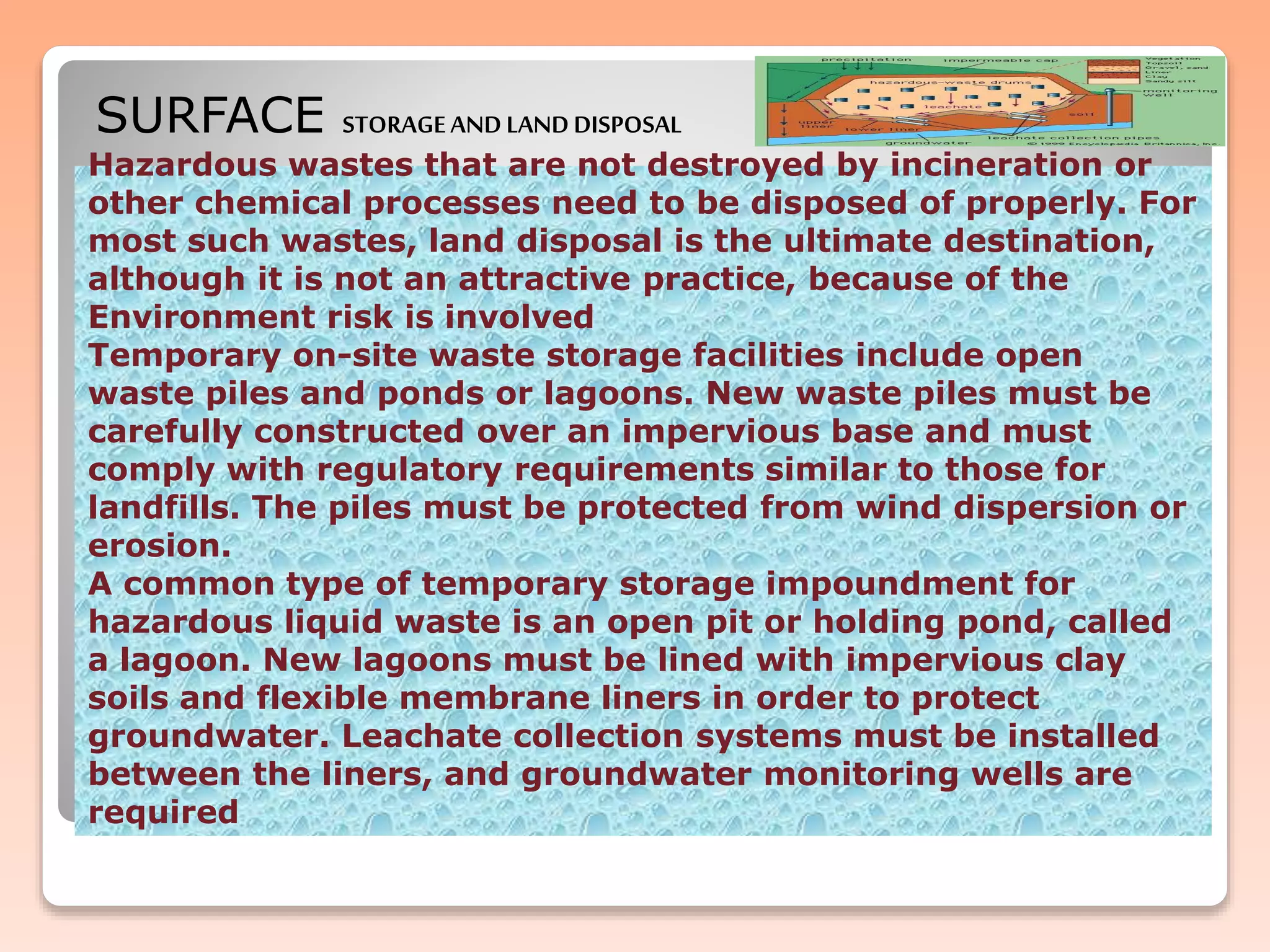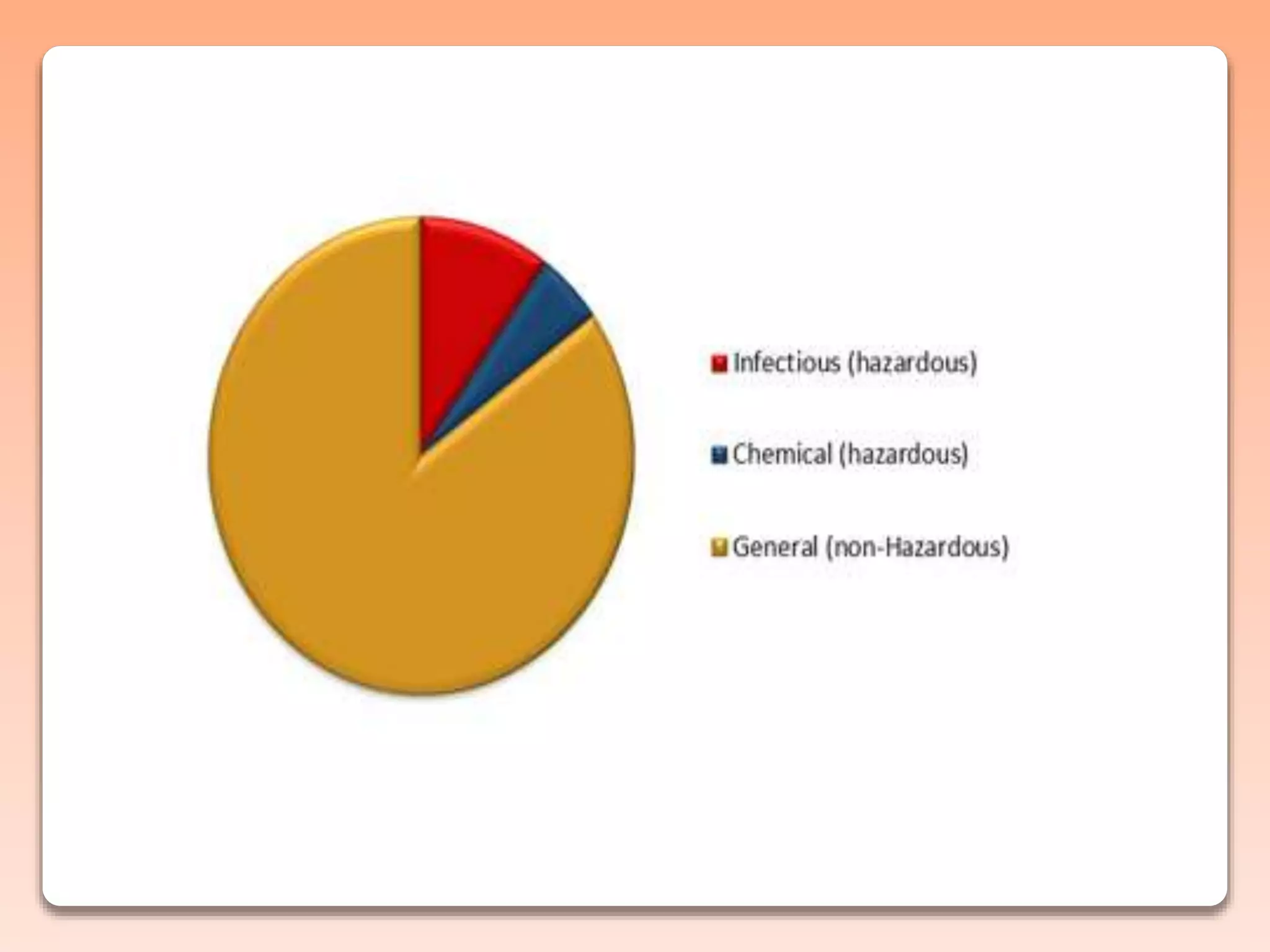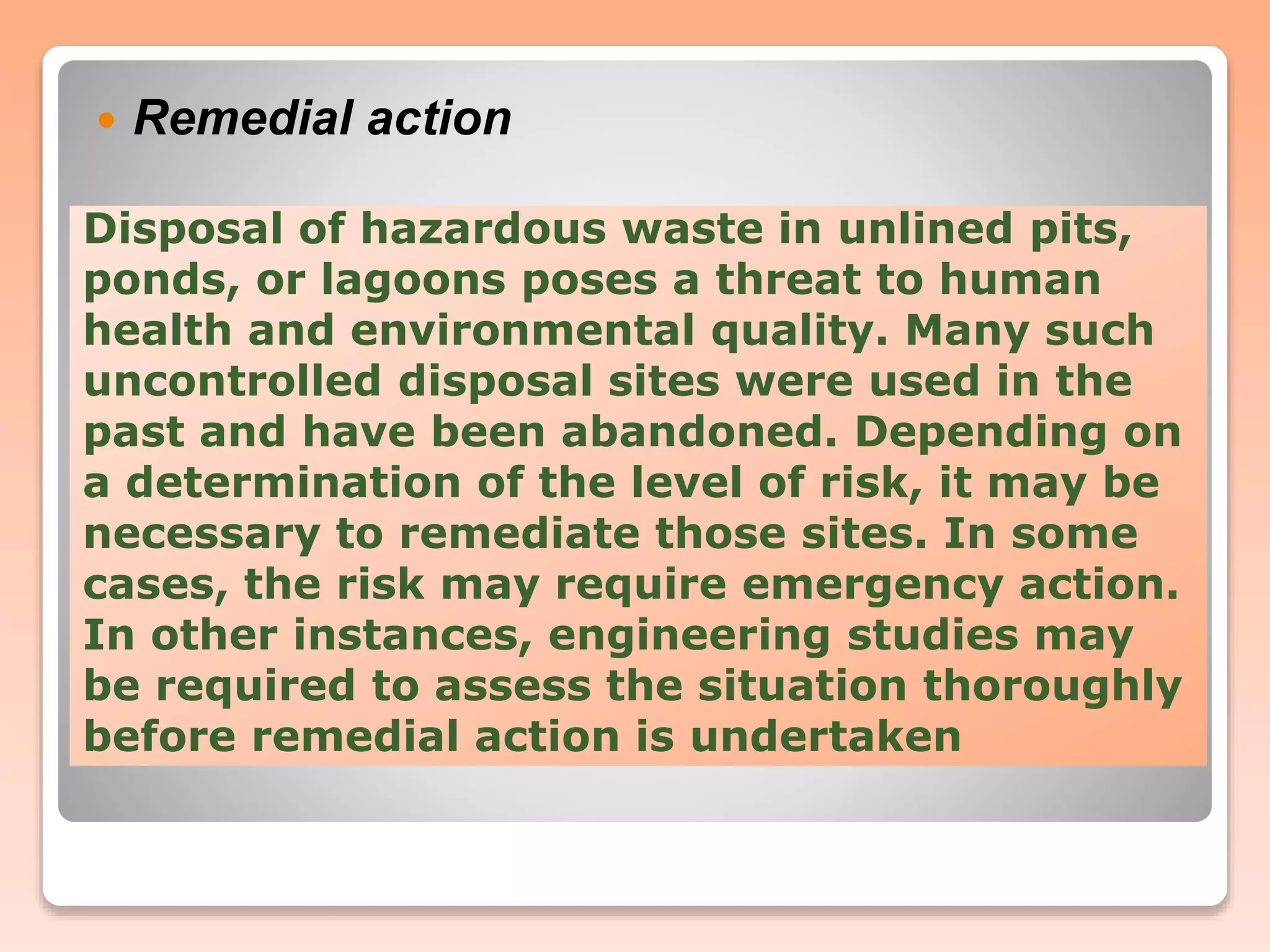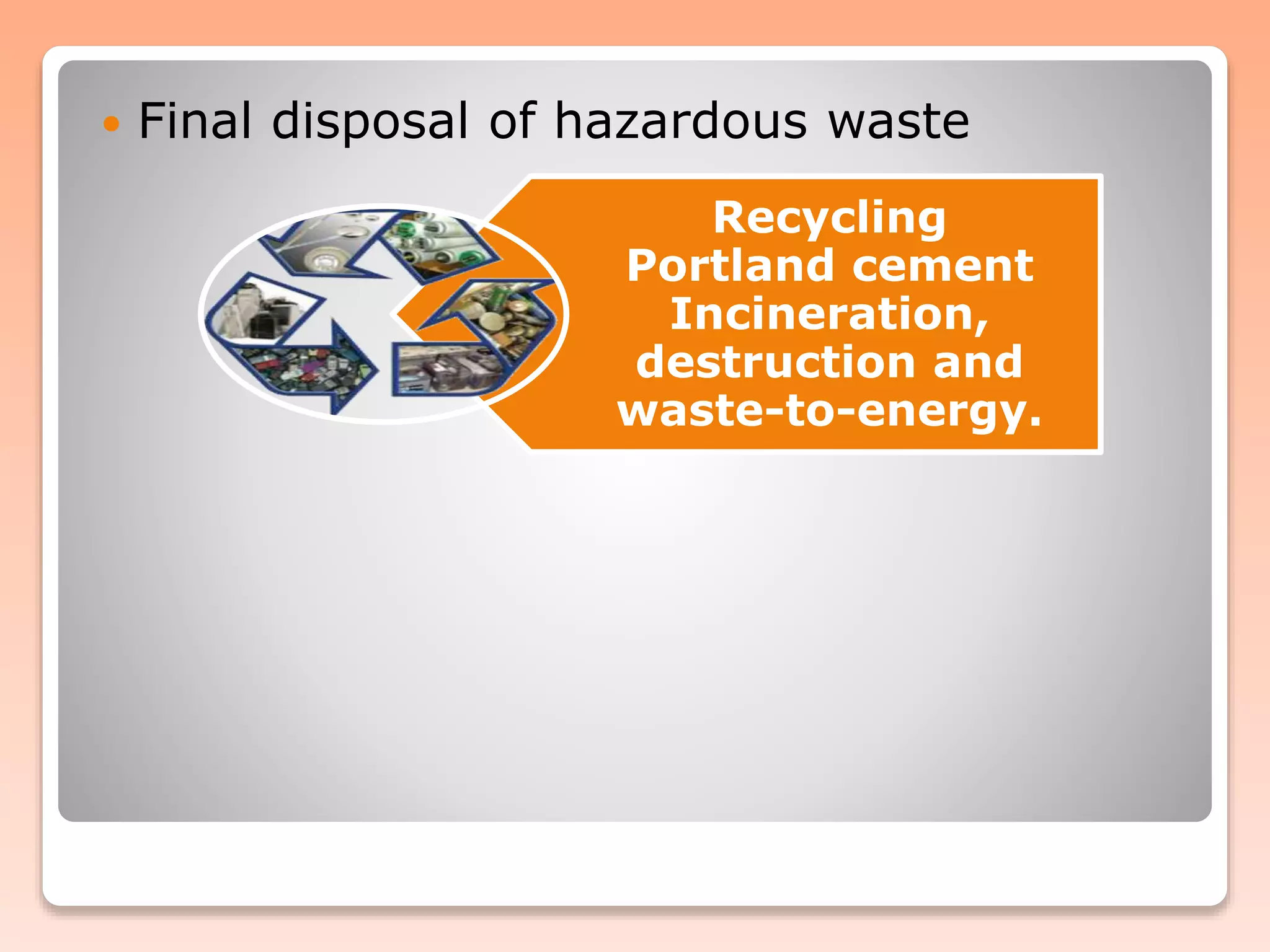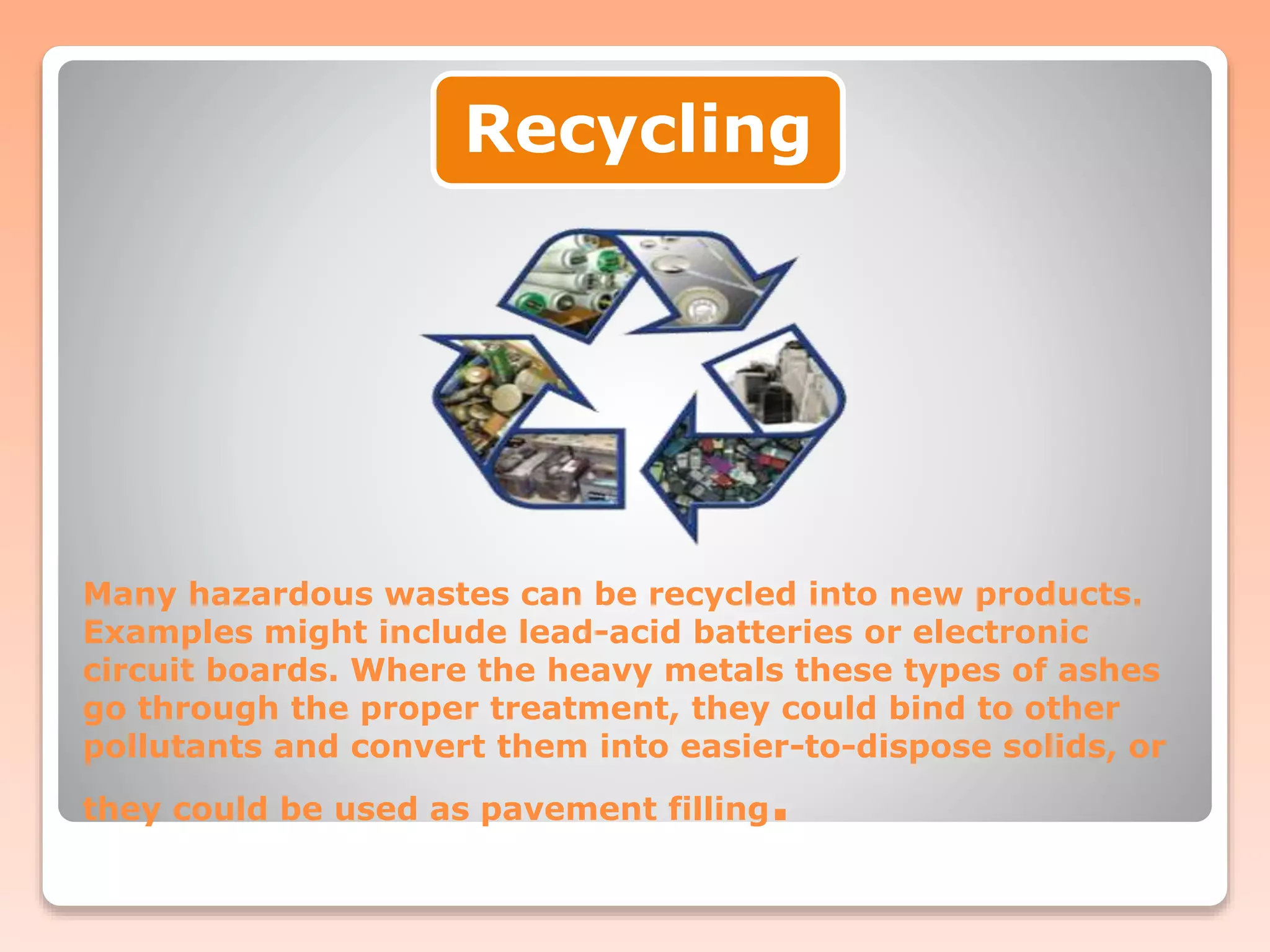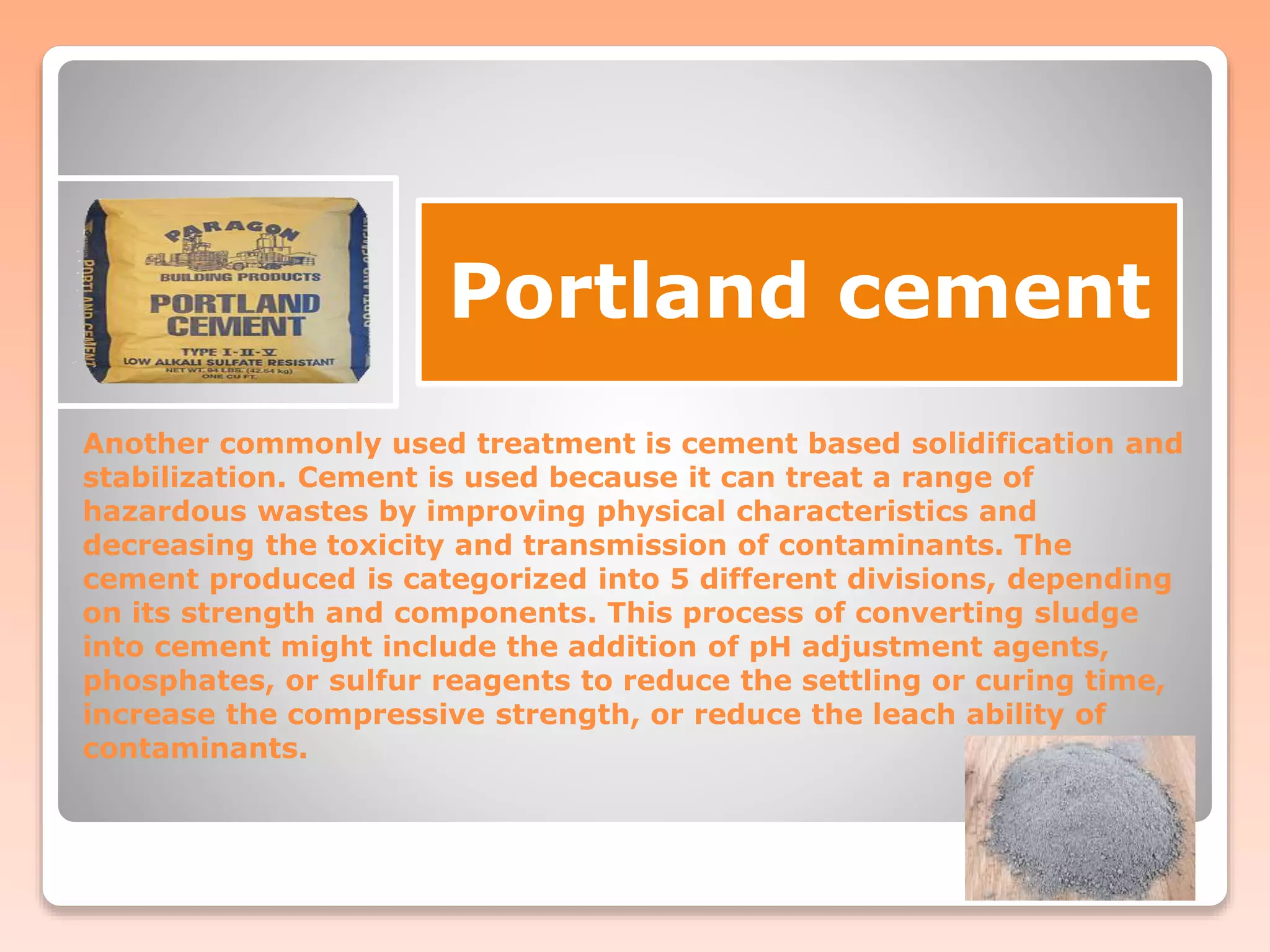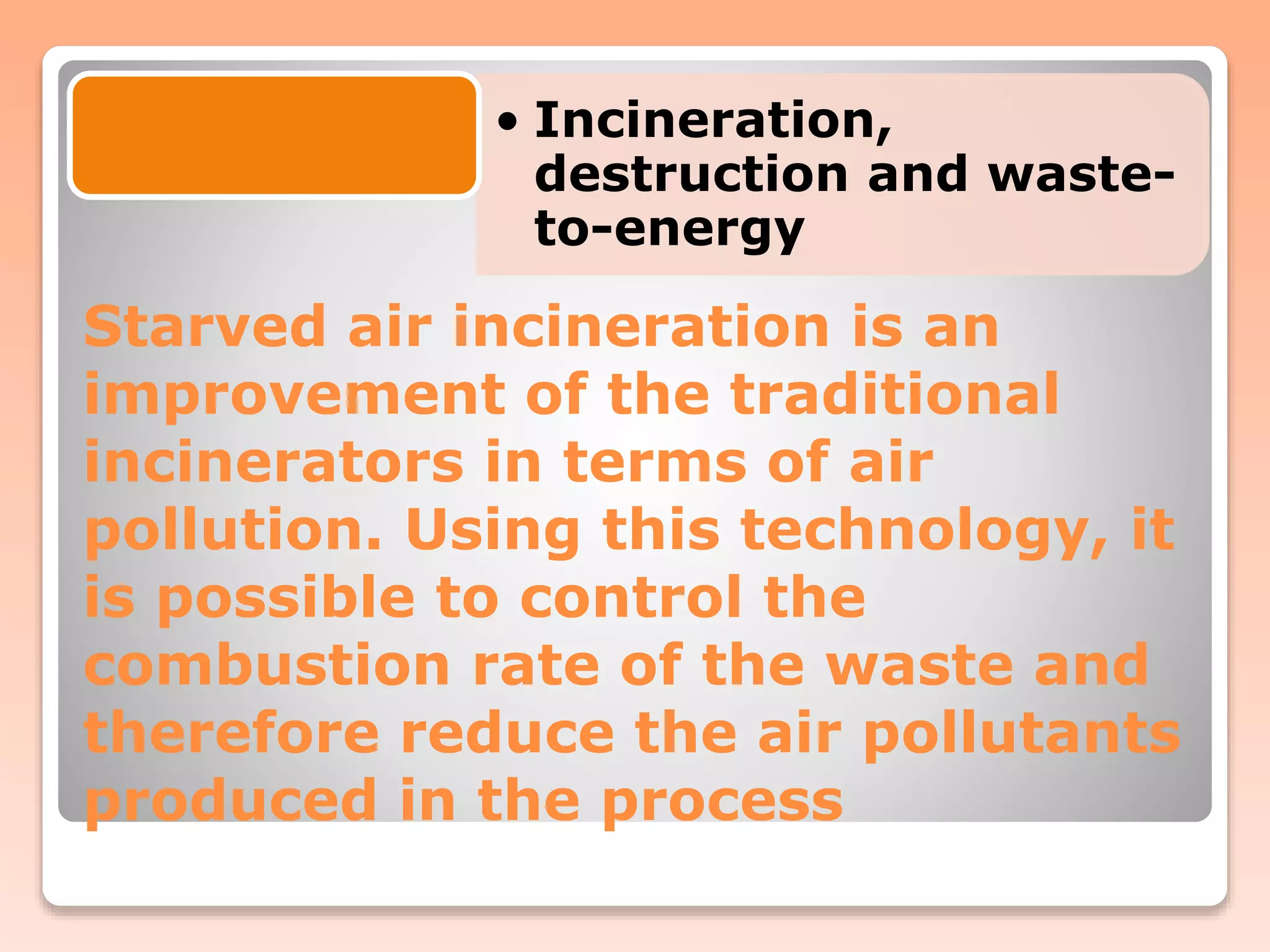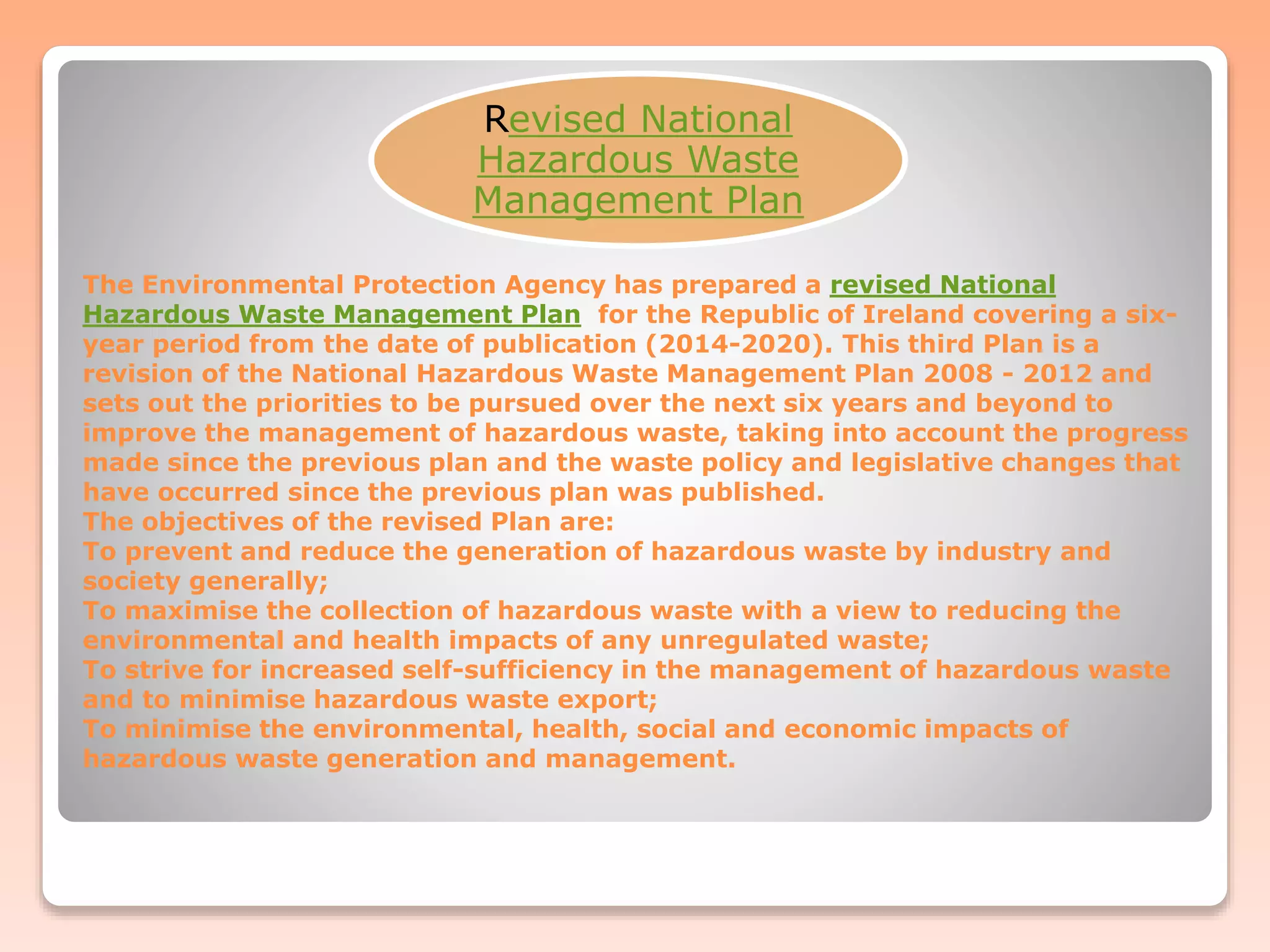Hazardous waste poses threats to public health and the environment. It is classified based on toxic, reactive, ignitable, corrosive, infectious or radioactive properties. The key features of hazardous waste management include the cradle-to-grave manifest system to track waste transportation and treatment, storage and disposal facilities. Treatment methods include chemical, thermal, and biological processes like incineration and landfarming. Untreated waste requires proper disposal such as in secure landfills or recycling to prevent environmental contamination. The national plan outlines priorities to improve hazardous waste management through prevention, collection, self-sufficiency and minimizing impacts.
